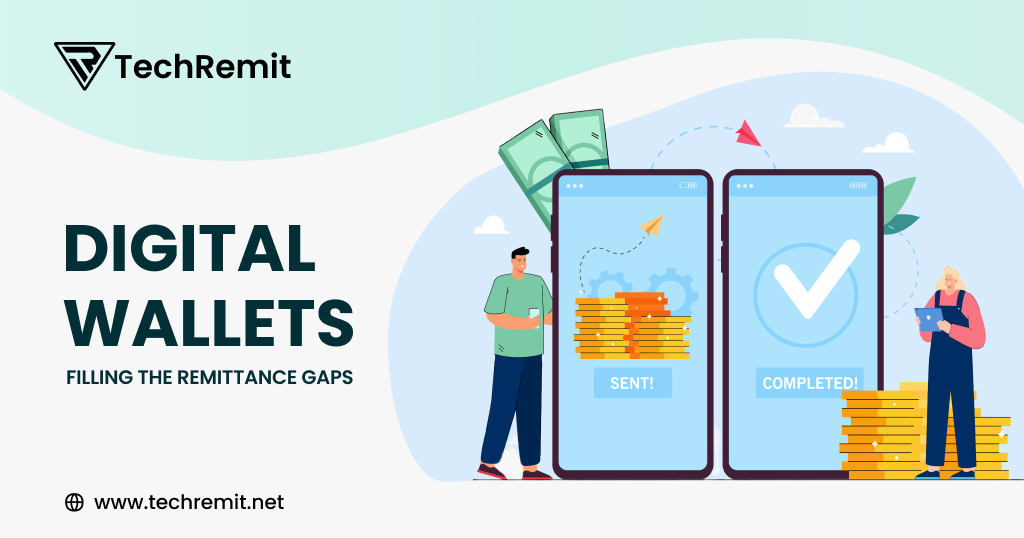Digital Wallets Filling The Remittance Gaps

According to a recent report from Juniper Research, digital cross-border remittances are expected to increase from $295 billion in 2021 to $428 billion in 2025, with a recovery to pre-pandemic levels of digital transactions by 2022.
Remittances are one of the most challenging payment methods to make more effective and appealing to consumers and businesses.
Opaque practices, antiquated financial systems, and intense regulatory oversight exacerbate the problem. Unserved populations still exist; these groups have never used formal banking systems and instead rely on unreliable and risky offline alternatives.
Nonetheless, due to the fast digitization and rising use of mobile devices, remittance payments are increasingly being made through digital channels. With digital wallets, cross-border remittances may be sent more quickly, cost-effectively, and transparently to both banked and unbanked individuals and enterprises.
Consumers are frequently at the core of discussions based on the advantages of digital wallets. We discuss how they may be more practical and quicker than cash payments, how their safety is enhanced, and how they do away with drawbacks like the requirement to enter a PIN or credit card information to finish a transaction.
These advantages are indisputable. But digital wallets are more than just a more accessible option for carrying around cash. One illustration is the enormous impact digital wallets may have on people’s lives when sending and receiving money.
Globalization: Driving money remittance
According to the World Bank, about 184 million people—2.3 %of the world’s population—live outside of their country of nationality. People do this for many different reasons, but one thing that all ex-pats have in common is that they will eventually wish to send money home.
Remittances are “the most concrete consequence of international migration,” according to The Migration Observatory. Money remittances are becoming increasingly popular as migration continues to rise. Most of this value is sent to developing countries, and the money is a lifeline for many on the receiving end.
The unexpected difficulties that come with money transfers in the digital era
It is understandable for those who have never worked abroad to believe that in 2018, transmitting money across borders to support your family would be simple and quick. However, the reality is that foreigners frequently encounter obstacles we may have yet to consider.
Exchange rates, which may be unfavourable or include a commission, might leave beneficiaries with even less money. These prices do not consider this.
Besides the financial difficulties, the procedure might also need to be faster. Due to government laws, clearinghouse processes, and other variables, it may take up to five working days for the money to reach a recipient’s bank account.
When one bank account is insufficient.
Naturally, our conversation thus far has been guided by the assumption that both the sender and the recipient have access to a bank account. But suppose neither of them does?
Global financial inclusion has seen a significant upsurge in support in recent years. This has prompted the creation of aggressive goals for reaching universal financial inclusion and legislative actions.
Nevertheless, improving everyone’s access to the financial system is a long-term solution. In the meantime, people will still need to figure out how to access and receive the money that their family sends from abroad. Funds in a bank account sometimes need to be more beneficial for receivers in these nations. Above all else, they require them in an easily accessible manner that is pertinent to their daily lives.
Closing the gap: The benefits of digital wallets
It’s easy to understand how digital wallets and applications like Tech Remit might affect remittance payments. They are frequently more affordable, quicker, and, most importantly, more relevant and handy than conventional approaches.
Instantaneous money transfers between digital wallets allow the recipient to pay out the remittance whenever it’s most convenient for them. The ease of the transfer is further enhanced by the fact that the sender merely needs the recipient’s email address.
Tech Remit likewise optimizes the advantages of digital wallet transfers; however, the remittance is sent directly into a bank account or another handy local payment-receiving option, such as a mobile money account, rather than to another digital wallet account. It’s easier to remit money to the same recipient frequently when you don’t have to enter their payment information after the initial transfer.
Furthermore, remitting money is less expensive with digital wallets as they frequently provide reduced fees and more competitive exchange rates.
In Conclusion
Digital wallets’ speed and ease of use are far too frequently appreciated only in business transactions. Mobile wallets, however, are not limited to these uses. Regarding remittances, they can assure expatriates that their loved ones will get more money in a format that works best for them, lightning fast.
Lastly, with the help of money remittances, people are trying to support their families.
The more pocket-friendly it is, the sooner it delivers and the more appropriate the format, the family — and the local economy — can instantly benefit.
Also Read : Remittance Software Trends to Watch in 2024